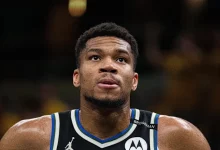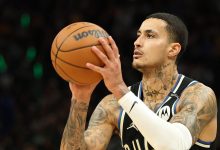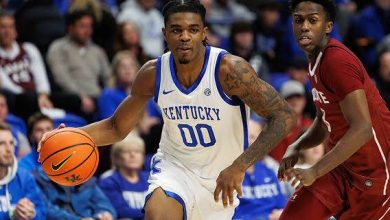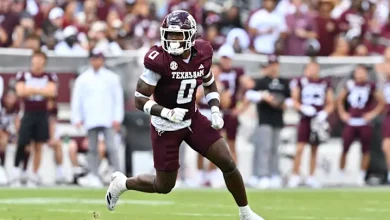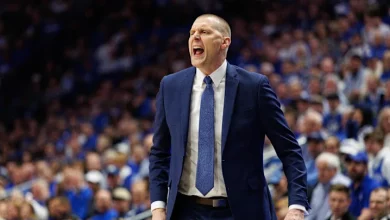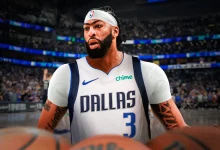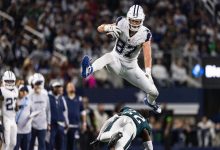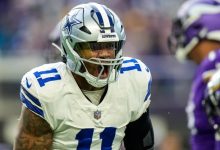CONTROVERSY: Draymond Green somehow didn’t get ejected for kicking Tari Eason in a very controversial NBA decision.
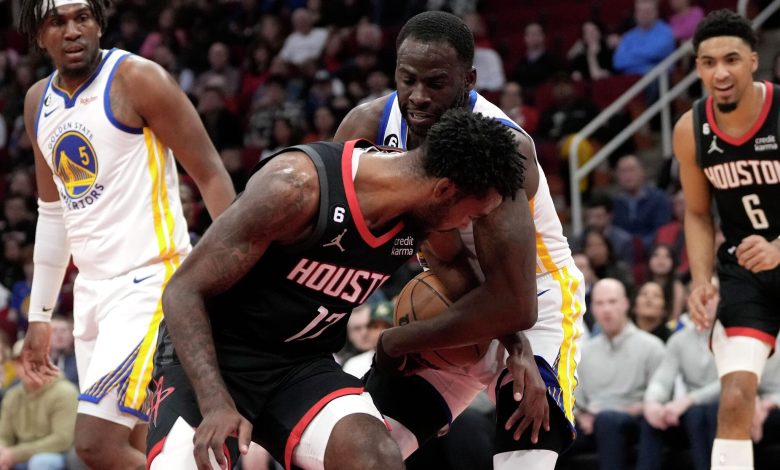
The NBA has long been a league where intensity, competition, and raw emotion often boil over into contentious moments. However, some incidents leave fans, players, and analysts alike scratching their heads when the decisions made by referees seem to fly in the face of what is expected. One such moment unfolded during a highly anticipated Golden State Warriors versus Houston Rockets game, where a controversial incident involving Draymond Green and Tari Eason became the center of attention.
Green, known for his fiery demeanor and history of on-court altercations, found himself in hot water after an off-the-ball incident with Eason. The altercation, which occurred in the third quarter of the game, featured Green kicking Eason, an action that immediately raised eyebrows from fans and analysts alike. Despite the clear nature of the kick, Green was not ejected from the game, leading to widespread debate over the decision to allow him to remain on the court. What followed was a firestorm of controversy, with many questioning the NBA’s handling of the situation.
This article delves deep into the events that led to the controversial incident, the NBA’s decision not to eject Green, and the broader implications it has for both the Warriors and Rockets, as well as the league as a whole. We’ll analyze Draymond Green’s reputation, previous incidents of on-court behavior, the role of referees in making such decisions, and how this controversial moment reflects larger conversations about consistency, fairness, and accountability within the NBA.
The Incident: Draymond Green Kicks Tari Eason
On the night of the game between the Golden State Warriors and the Houston Rockets, all eyes were on the Warriors’ veteran forward, Draymond Green. Known for his defense, basketball IQ, and leadership, Green is also infamous for his aggressive, sometimes reckless style of play. His temper and willingness to mix it up on the court have led to multiple fines and suspensions over his career. But nothing could prepare fans for the controversial incident that occurred with just under 8 minutes left in the third quarter.
As the Rockets and Warriors jostled for position on the court, Green and Eason found themselves tangled up while fighting for position under the basket. As the play moved away from the area, Green, in a moment of frustration, swung his leg backward and kicked Eason in the midsection. Eason, clearly stunned by the unexpected contact, immediately dropped to the floor in pain, prompting a reaction from both players and officials.
What followed was a few seconds of chaos, as both teams reacted to the situation. Eason lay on the floor while trainers quickly attended to him, and the officials huddled together to discuss the incident. The expectation from fans, analysts, and commentators was that Green, due to the nature of the kick, would likely be ejected from the game. After all, it was a direct physical altercation that involved an illegal move aimed at injuring an opponent. However, much to everyone’s surprise, the referees decided to review the play for a potential flagrant foul but ultimately allowed Green to stay in the game without issuing an ejection.
Reactions to the Non-Ejection: A Firestorm of Debate
The moment Green was not ejected, social media exploded with a wave of reactions. Fans across the NBA community, including both Warriors and Rockets supporters, expressed shock and disbelief at the decision. The prevailing sentiment was one of frustration, with many pointing to the severity of the kick and the fact that Green had a history of similar infractions as reasons why he should have been removed from the game.
Public Reaction: A Divided Fanbase
Some fans took to social media to express their outrage, questioning the fairness and consistency of the referees’ decision-making process. One Twitter user noted: “If this was anyone else, they’d be ejected in a heartbeat. How does Draymond Green get a pass yet again?” Another fan expressed a similar sentiment: “How is that not a flagrant 2? The NBA has double standards when it comes to stars. Green has gotten away with too much over the years.”
There were, however, others who defended Green, suggesting that the kick might have been incidental or not intentional. These fans argued that while Green is a fiery player, he is often misunderstood, and that this specific incident didn’t rise to the level of an ejection. They pointed to his previous moments of aggression, stating that Green’s competitive spirit sometimes led to overreaction but not necessarily malice.
Former Players Weigh In
The opinions of former NBA players and analysts were equally divided. Some ex-players pointed to Green’s history as a major factor in their belief that he should have been ejected. Shaquille O’Neal, the NBA legend known for his dominant presence in the paint, weighed in on the matter during a post-game broadcast, stating: “You cannot do that. It doesn’t matter who you are, when you’re in the heat of the moment, you have to keep control. A kick like that is dangerous, and the refs should have acted swiftly.”
On the other hand, some former players, particularly those with a history of playing alongside Green, argued that he didn’t deserve to be thrown out of the game. Stephen Jackson, a former NBA forward and outspoken personality, defended his former colleague, saying: “Draymond’s a guy who plays with fire, and that’s just part of who he is. Was it a bit much? Sure. But there was no real intent to hurt Eason there.”
Draymond Green’s History of Controversial Incidents
One key element that added fuel to the controversy surrounding this particular play was Draymond Green’s well-documented history of on-court altercations. Over his career, Green has been involved in multiple incidents that have raised questions about his discipline and sportsmanship. A quick glance at his past reveals a pattern of actions that have sometimes crossed the line between competitive play and dangerous behavior.
- 2016 NBA Finals – Flagrant Foul on LeBron James: One of the most infamous incidents in Green’s career came during the 2016 NBA Finals, when he was suspended for a flagrant foul against LeBron James after hitting him in the groin. Green’s suspension in that pivotal series was seen as a turning point in the Warriors’ eventual loss, and it drew criticism for its perceived leniency in Green’s punishment.
- Multiple Technical Fouls and Suspensions: Throughout his career, Green has racked up an impressive number of technical fouls, earning him the reputation as one of the league’s most aggressive players. In fact, Green has been suspended on several occasions for excessive physical play or verbal altercations with officials.
- 2018 Kick to Steven Adams: Another controversial moment in Green’s career came when he kicked Steven Adams of the Oklahoma City Thunder in the groin during a playoff game. Green was given a flagrant foul for the incident but was not ejected, which sparked debate over the consistency of his punishment compared to other players in similar situations.
Given these past incidents, Green’s actions in the game against the Rockets were immediately scrutinized with a magnifying glass. The question on everyone’s mind was: Is the NBA showing preferential treatment to Green because of his star status?
The Role of the Referees: A Matter of Consistency and Accountability
At the heart of the controversy lies the role of the referees in making what many perceived as a questionable decision. Referees are often tasked with making split-second calls in high-pressure situations, but their decisions can sometimes be influenced by factors beyond the actual play itself. In Green’s case, some critics argued that the referees hesitated to eject him due to his star power and the potential impact his removal would have on the game’s outcome.
NBA Referee Association president Billy Kennedy defended the referees’ decision in a statement following the game, explaining: “Referees must act according to the rules and guidelines provided by the league. They are trained to make decisions based on the severity of the play and the context of the game. In this case, after reviewing the situation, the decision was made that an ejection was not warranted.”
However, many fans and analysts disagreed with the call, suggesting that Green’s prior history of controversial incidents warranted a more severe punishment. The consistency of officiating has been a major topic of conversation in the NBA in recent years, with fans and players alike calling for more transparency and accountability from the refereeing staff.
Impact on Both Teams: The Fallout from the Controversy
The controversy surrounding Green’s actions did not just have implications for him. It also significantly impacted both teams involved in the game. For the Houston Rockets, the play sent a message about how their young players would be treated when facing a seasoned NBA veteran like Green. The act of aggression towards Tari Eason, a promising rookie, had the potential to fuel animosity between the two teams moving forward.
For the Golden State Warriors, the decision not to eject Green brought mixed emotions. While Green’s presence on the court provided the Warriors with valuable experience and leadership, the cloud of controversy followed them for the rest of the game. The incident became the focal point of post-game analysis, detracting from the team’s actual performance on the court.
In the end, the controversial incident between Draymond Green and Tari Eason left fans, analysts, and even players questioning the NBA’s decision-making process. While Green’s reputation for fiery play and past altercations may have played a role in how the incident was handled, the real issue at the heart of the controversy is the lack of consistency and accountability in officiating. As the NBA continues to evolve, ensuring that players are held to the same standard regardless of their star power or reputation should be a priority. Whether Green should have been ejected or not remains a matter of debate, but one thing is clear: this controversial moment is bound to spark further discussions about fairness and consistency in the NBA for seasons to come.

